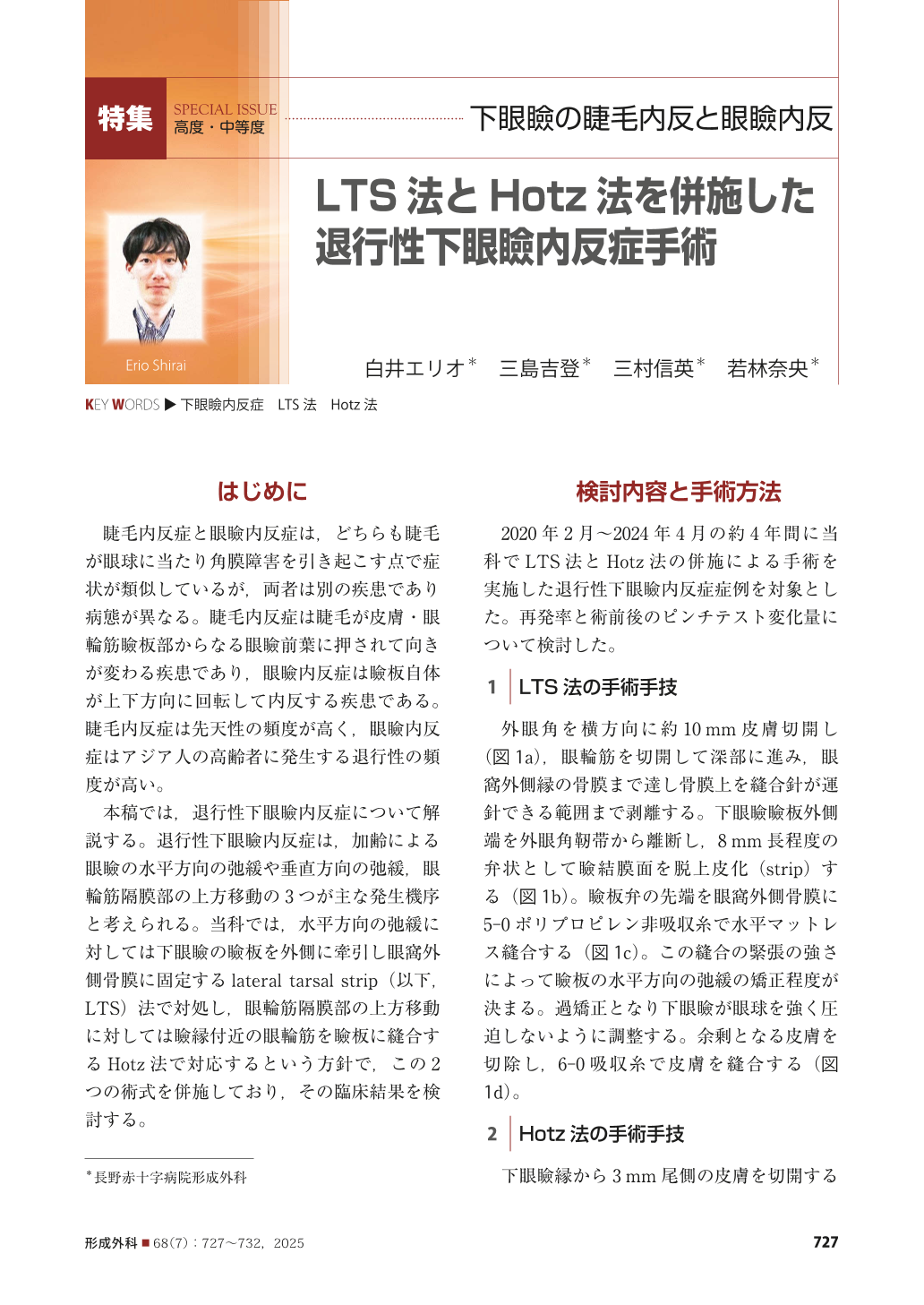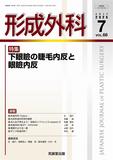Japanese
English
- 有料閲覧
- Abstract 文献概要
- 1ページ目 Look Inside
- 参考文献 Reference
- サイト内被引用 Cited by
はじめに
睫毛内反症と眼瞼内反症は,どちらも睫毛が眼球に当たり角膜障害を引き起こす点で症状が類似しているが,両者は別の疾患であり病態が異なる。睫毛内反症は睫毛が皮膚・眼輪筋瞼板部からなる眼瞼前葉に押されて向きが変わる疾患であり,眼瞼内反症は瞼板自体が上下方向に回転して内反する疾患である。睫毛内反症は先天性の頻度が高く,眼瞼内反症はアジア人の高齢者に発生する退行性の頻度が高い。
本稿では,退行性下眼瞼内反症について解説する。退行性下眼瞼内反症は,加齢による眼瞼の水平方向の弛緩や垂直方向の弛緩,眼輪筋隔膜部の上方移動の3つが主な発生機序と考えられる。当科では,水平方向の弛緩に対しては下眼瞼の瞼板を外側に牽引し眼窩外側骨膜に固定するlateral tarsal strip(以下,LTS)法で対処し,眼輪筋隔膜部の上方移動に対しては瞼縁付近の眼輪筋を瞼板に縫合するHotz法で対応するという方針で,この2つの術式を併施しており,その臨床結果を検討する。
Although epiblepharon and entropion both present with eyelashes rubbing against the cornea (leading to corneal damage), they are distinct diseases with different pathophysiologies. Epiblepharon is characterized by the misdirection of eyelashes due to pressure from the overlying skin, while entropion involves the inward turning of the entire eyelid caused by rotation of the tarsus. Epiblepharon is more common in congenital cases, whereas entropion, particularly in elderly Asian populations, is often associated with degenerative changes. The primary causes of degenerative lower-eyelid entropion include horizontal laxity, vertical laxity, and overriding of the preseptal orbicularis oculi muscle with aging.
At our clinic, we use the lateral tarsal strip (LTS) procedure to address horizontal laxity by externally pulling the tarsus and securing it to the lateral orbital periosteum. To prevent overriding of the preseptal orbicularis oculi muscle, we perform a modified Hotz procedure that involves suturing the orbicularis oculi muscle near the eyelid margin to the tarsus. In this paper we discuss the details of the treatment of degenerative lower-eyelid entropion as performed at our clinic.

Copyright© 2025 KOKUSEIDO CO., LTD. All Rights Reserved.


